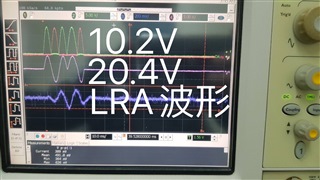Other Parts Discussed in Thread: DRV2605L-Q1, TPA3110D2-Q1
Hi Team,
My customer now is designing a Automotive Infotainment system, need the LRA/Haptic *4 in their design.
The LRA(or Haptic ?) datasheet as below.
And I also get the current solution datasheet (competitor) from customer, if you need or interesting it, please send me a mail, I will share you off line.
Does TI have suitable solution can drive above device ? Please advise.
DRV2510-Q1 is fine ?
Thanks!
Kai


